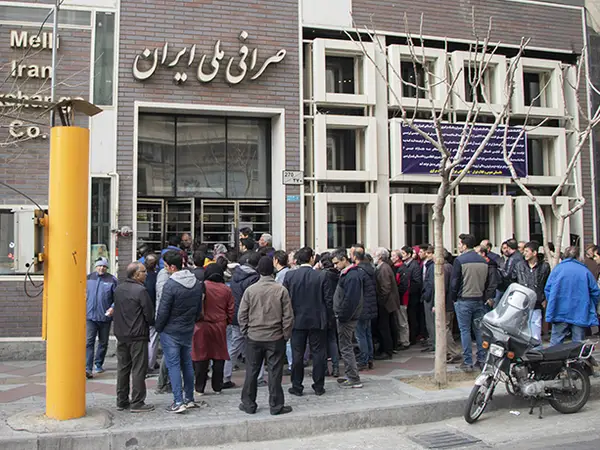Iran's central bank says that over $6 billion was taken out of the country in six months (March 21-Sept. 20), because of political and economic uncertainty.
The precise amount of capital leaving Iran is very difficult to calculate but it can be deducted from the official data on net capital account deficit.
The amount of capital lost during the first six months of the current Iranian calendar year equals the entire twelve months of the previous year when capital flight amounted to around $6.3 billion, Fararu website wrote Thursday. This is a significant amount for Iran that struggles to sell oil and earn dollars amid US sanctions.
The report said Central Bank of Iran (CBI) figures indicate that Iranians were not reassured about the safety of their investments even when officials of the new government said it intended to resume the Vienna talks to restore the 2015 nuclear deal, Joint Comprehensive Plan of Action (JCPOA). The talks that began in April under moderate President Hassan Rouhani were halted immediately after hardline Ebrahim Raisi was elected president on June 20.
According to official figures, Iran's net capital account balance was positive from 2001 to 2005 when there was foreign investment. But in the following years, except in 2014, the balance has been in the negative. Foreign investment in Iran in 2020 was around $1.35 billion.
In October the conservative Farhikhtegan newspaper said central bank’s statistics indicated that since 2005 Iran had lost around $170 billion in capital while foreign investment also dropped significantly due to various sanctions during the same period. The highest capital drain during this period, according to the CBI, amounted to over $19 billion in 2017, followed by $16 billion in 2018.
The hard currency outflow from the country is invested in various ways including in property, stocks, bonds, cryptocurrencies, or establishment of companies abroad. Investment in neighboring countries is particularly popular.
According to the parliament's research center lack of trust in the future of the country, corruption and social restrictions are factors encouraging people to send their capital abroadoften using hidden methods and middlemen, that might hide even more capital transfers from the country.
The main mechanism used by investors to circumvent government controls over transfering hard currency abroad is through the unofficial. In January 2015, former Vice-President Es'hagh Jahangiri accused the government of hardline Mahmoud Ahmadinejad (2005-2013) of moving over $22 billion of oil revenues to Turkey and the UAE through this system within a period of eighteen months under the pretext of controlling forex rates.
One of the indications of capital flight from Iran is the popularity of property acquisition in neighboring countries such as Turkey, the United Arab Emirates, and Georgia which often goes hand in hand with business investments.
Iranians have been among the top foreign property buyers in Turkey where with investing $250,000 which can help them acquire Turkish citizenship, establish businesses, and engage in international trade without the fear of US sanctions. Iranians have established over 4,000 companies in Turkey between 2013 and 2021 which according to Farhikhtegan can amount to around $3 billion in investment. The same goes with the UAE where over half a million Iranians live and thousands of Iranian businesses are based.
According to the Turkish Statistical Institute, with purchasing over 3,000 homes during the first seven months of 2020, Iranians were the biggest foreign investors in the Turkish real estate market. The previous year, before the pandemic began, the number of properties purchased by Iranians was even higher at nearly 5,500. A senior lawmaker said in Octoberthat Iranians had bought $7 billion of real estate in Turkey in three years.
